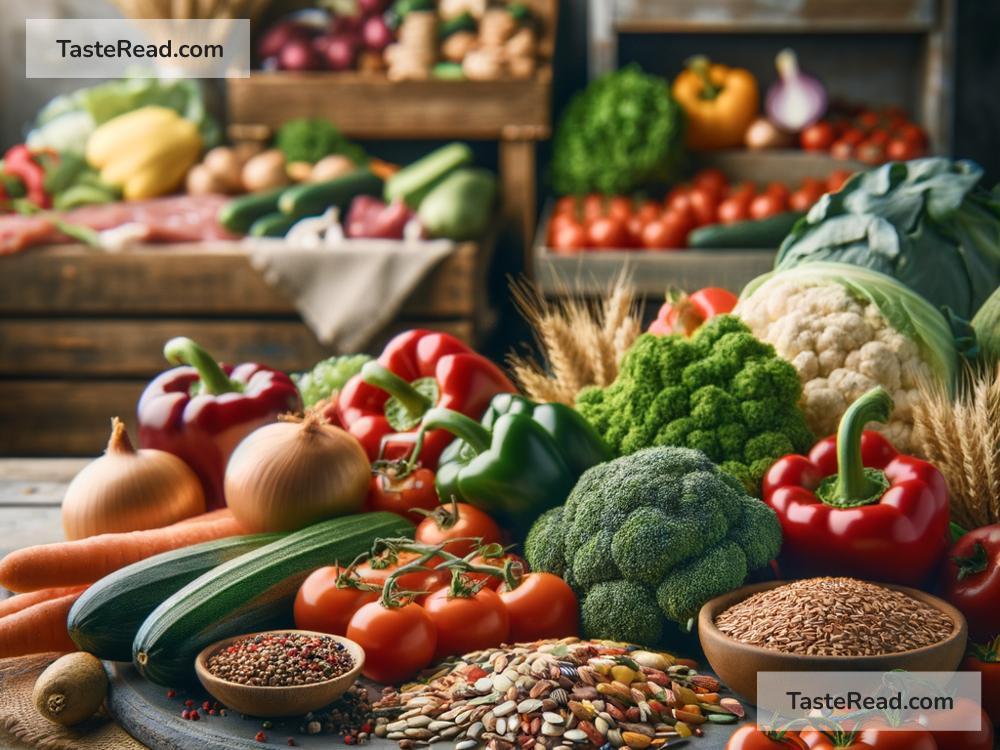The Impact of Food Availability on Nutrition
Food is one of the most essential parts of human life. It gives us the energy we need to work, play, and stay healthy. But not everyone has the same access to healthy food. While some people live near supermarkets and have a variety of choices, others struggle to find enough nutritious food to eat. This difference in food availability can seriously affect people’s health, well-being, and overall nutrition.
What Does Food Availability Mean?
Food availability refers to how easy it is for people to find and access food in their community. It includes having enough food supplies, the ability to afford them, and access to places where food is available, like farms, markets, and grocery stores. If healthy food is hard to find or too expensive, people may end up eating what is convenient and affordable, even if it isn’t nutritious.
Why Does Food Availability Matter?
Food availability plays a huge role in nutrition. Nutritious foods like fresh fruits, vegetables, whole grains, and lean proteins are necessary to keep our bodies strong and fight off diseases. But if these foods aren’t available in someone’s area or are too expensive, people may rely on cheap and unhealthy options like fast food, processed snacks, or sugary drinks. Over time, this can lead to health problems like obesity, diabetes, and heart disease.
On the other hand, if healthy food is widely available and affordable, people are more likely to make nutritious choices. Communities with better food availability often have lower rates of diet-related illnesses and healthier populations overall.
Food Deserts and Their Impact
One term you often hear when talking about food availability is “food desert.” A food desert is a place where people can’t easily access affordable, nutritious food. Food deserts are common in low-income and rural areas, where large grocery stores are scarce or far away. Instead, people living in food deserts may only have access to convenience stores or fast-food restaurants, which often sell unhealthy, processed foods.
Living in a food desert can make it almost impossible to maintain a balanced diet. Even if someone wants to eat healthily, they might not have the options they need. As a result, poor nutrition becomes more common in food deserts, leading to health problems in these communities.
How Economic Factors Affect Food Availability
Money also plays a big role in food availability. Even in areas where healthy food is accessible, it isn’t always affordable. Organic produce, fresh fish, and lean meats often cost much more than processed foods, which makes it hard for families with a limited budget to buy them regularly.
When money is tight, people often buy food that gives them the most calories for the lowest price. Unfortunately, these foods are usually high in sugar, fats, and salt, instead of vitamins, minerals, and other nutrients needed for good health.
The Global Perspective
Food availability affects not just individual families or communities but entire countries. In wealthier countries like the United States or Canada, many people have access to a variety of foods, but inequalities still exist. Food deserts and income gaps mean that lower-income groups are more likely to suffer from poor nutrition.
In poorer countries, the situation is even more extreme. Some regions face food shortages due to droughts, conflicts, or lack of infrastructure. In these cases, families struggle to get enough food to eat, let alone think about the nutritional value of their meals. Malnutrition becomes common, especially among children, and can lead to stunted growth, weakened immunity, and other lifelong health issues.
How Can We Improve Food Availability?
Improving food availability is not easy, but there are steps communities, governments, and individuals can take. Here are a few ideas:
-
Building More Grocery Stores: Governments and private companies can invest in building grocery stores in areas that lack them. This would give communities better access to healthy food options.
-
Supporting Local Farmers: Farmers’ markets and community-supported agriculture (CSA) programs can help bring fresh, locally grown produce to areas with poor food availability. Supporting local farmers helps both the farmers and their communities.
-
Education: Teaching people about nutrition and how to make healthy choices on a budget can go a long way in improving overall health. Cooking classes or educational workshops can help people learn how to prepare healthy meals.
-
Financial Assistance: Programs like food stamps or subsidies can make nutritious food more affordable for low-income families. Schools can also offer free or reduced-cost lunches that prioritize healthy options.
-
Advocating for Change: People and organizations can push for policies that promote food equity, such as laws to reduce food waste, tax incentives for grocery stores, or investments in public transportation to make grocery stores easier to reach.
Conclusion
Food availability has a powerful effect on nutrition. When healthy food is easy to access and affordable, people are more likely to eat well and stay healthy. However, when nutritious food is scarce or expensive, many people turn to less healthy options, putting their health at risk.
Recognizing the impact of food availability is the first step toward solving the problem. By working together to ensure everyone has access to affordable, nutritious food, we can create healthier communities and reduce the burden of diet-related illnesses on society. Food is a basic human need, and everyone deserves to have enough of it—and the right kinds—for a happy, healthy life.


